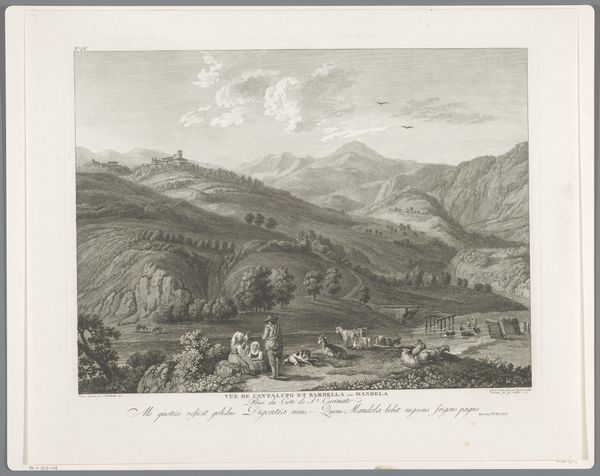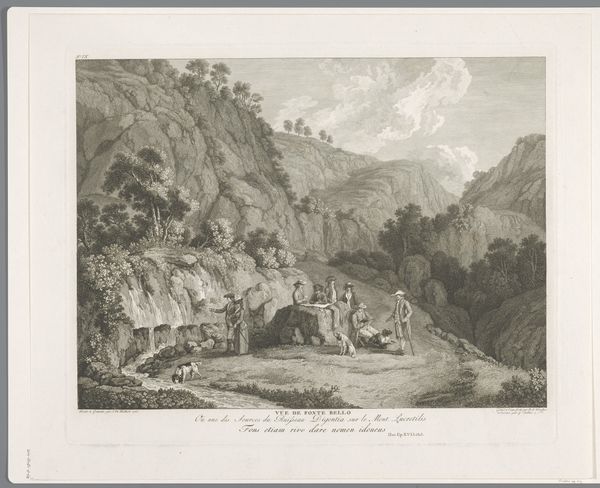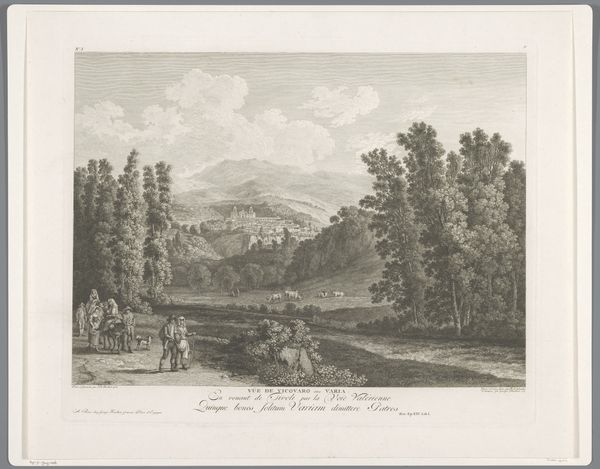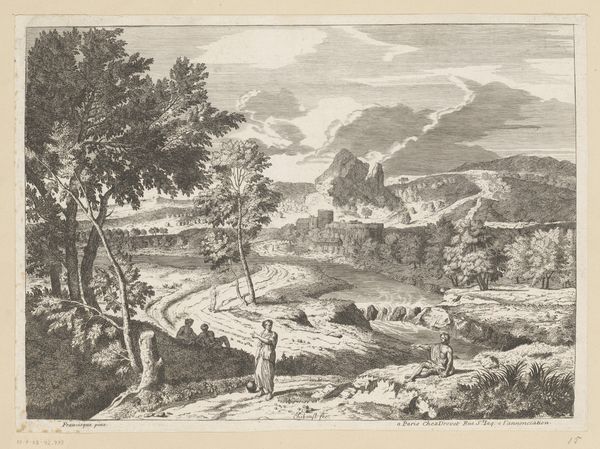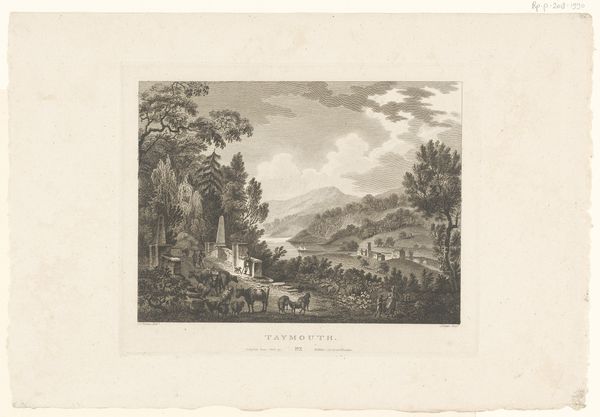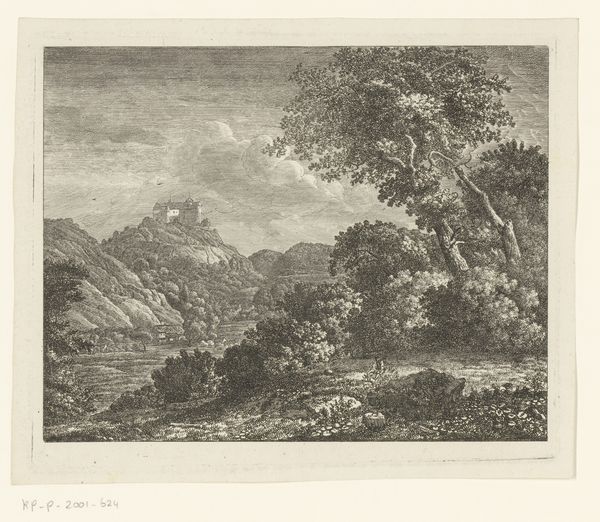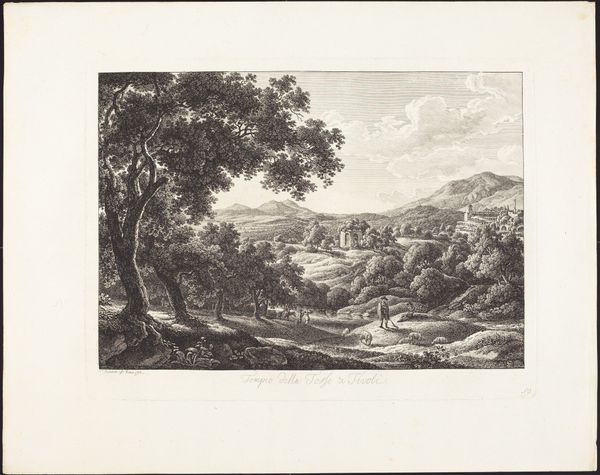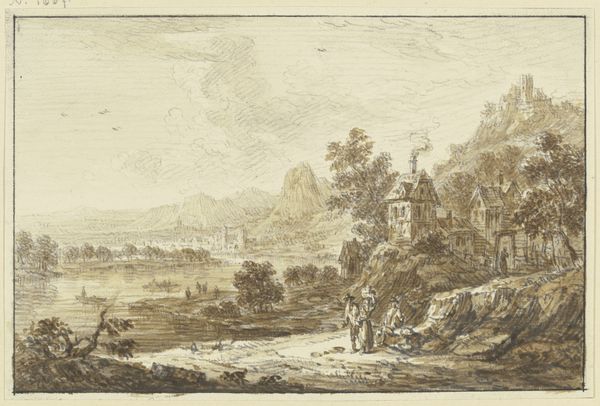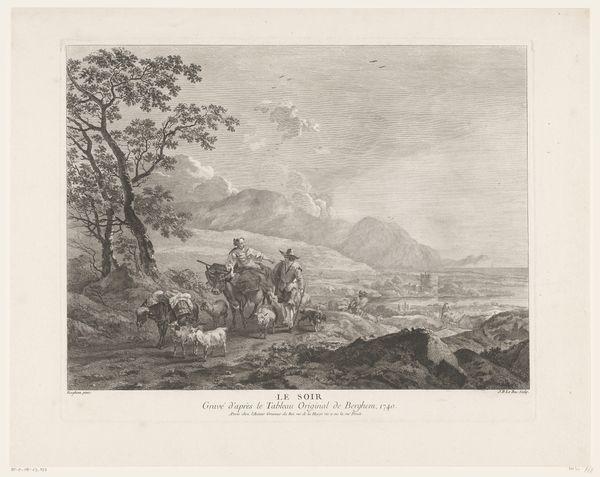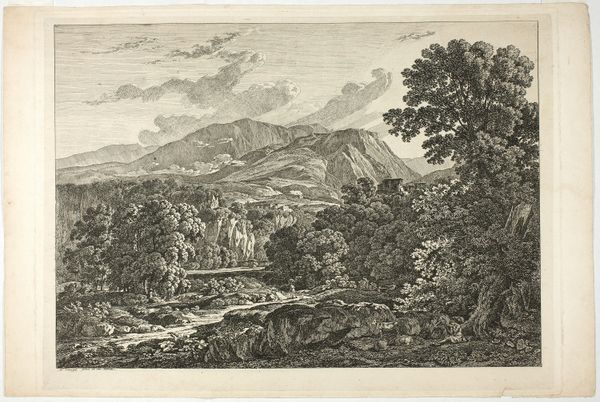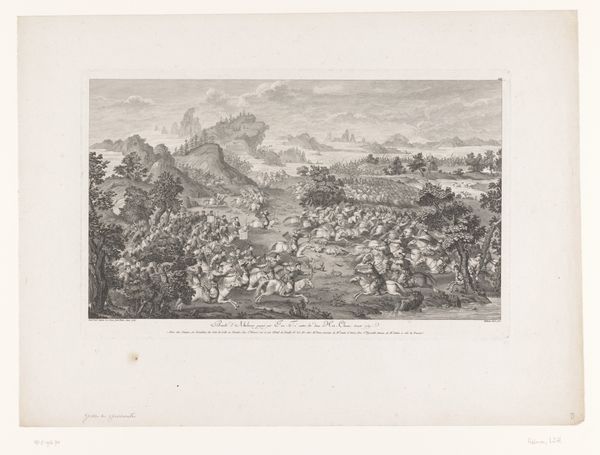
drawing, paper, ink
#
drawing
#
neoclacissism
#
landscape
#
paper
#
ink
#
mountain
#
watercolour illustration
#
genre-painting
#
natural palette
Dimensions: height 374 mm, width 465 mm
Copyright: Rijks Museum: Open Domain
Curator: Let's discuss this drawing, "Gezicht op Roccagiovine," by Balthasar Anton Dunker, created between 1780 and 1805. It's a work rendered in ink on paper and currently held at the Rijksmuseum. Editor: Immediately, a sense of pastoral calm washes over me. The gentle slopes, the shepherds with their flock—it all feels so idealized and serene, like a carefully constructed Arcadia. Curator: The composition is certainly structured to evoke that. Notice the carefully balanced masses, the way the artist leads the eye from the foreground figures back to the hilltop village, all contained within a gentle tripartite structure. Dunker demonstrates neoclassical principles in the articulation of space and form. Editor: That village perched atop the hill intrigues me. It is a clear reference to established settlements within the Italian landscape. Its symbolic positioning almost evokes the enduring presence of civilization amid nature's embrace, reminiscent of ancient settlements of old. Curator: I agree. The visual emphasis creates a stable, vertical element grounding the horizontal planes of the fields. This intersection becomes a key visual anchor. The details here create focal points within the panoramic landscape. Editor: And even in the small foreground figures, there's a clear connection to traditional symbolism of rural life—the idea of simplicity, connection to the land, perhaps even a gentle nostalgia for an era gone by. Curator: Indeed, these figures contribute to the overall sense of balance but their scale within the larger setting reinforces the sublime scale of the natural world and human place within it. Editor: It speaks volumes about how cultural memory gets imprinted upon landscapes, doesn't it? The echoes of classical ideals reverberate through its imagery, constantly reinventing notions of simpler times. Curator: Ultimately, this drawing allows us a glimpse into the artist’s formal control and intellectual grounding through this picturesque vista. Editor: For me, it serves as a meditation on how we build lasting images of our relationship to both history and place. The iconography lends the location enduring meaning.
Comments
No comments
Be the first to comment and join the conversation on the ultimate creative platform.
